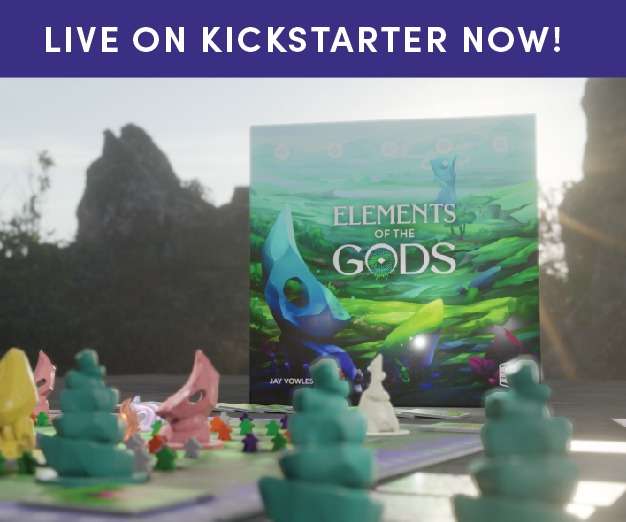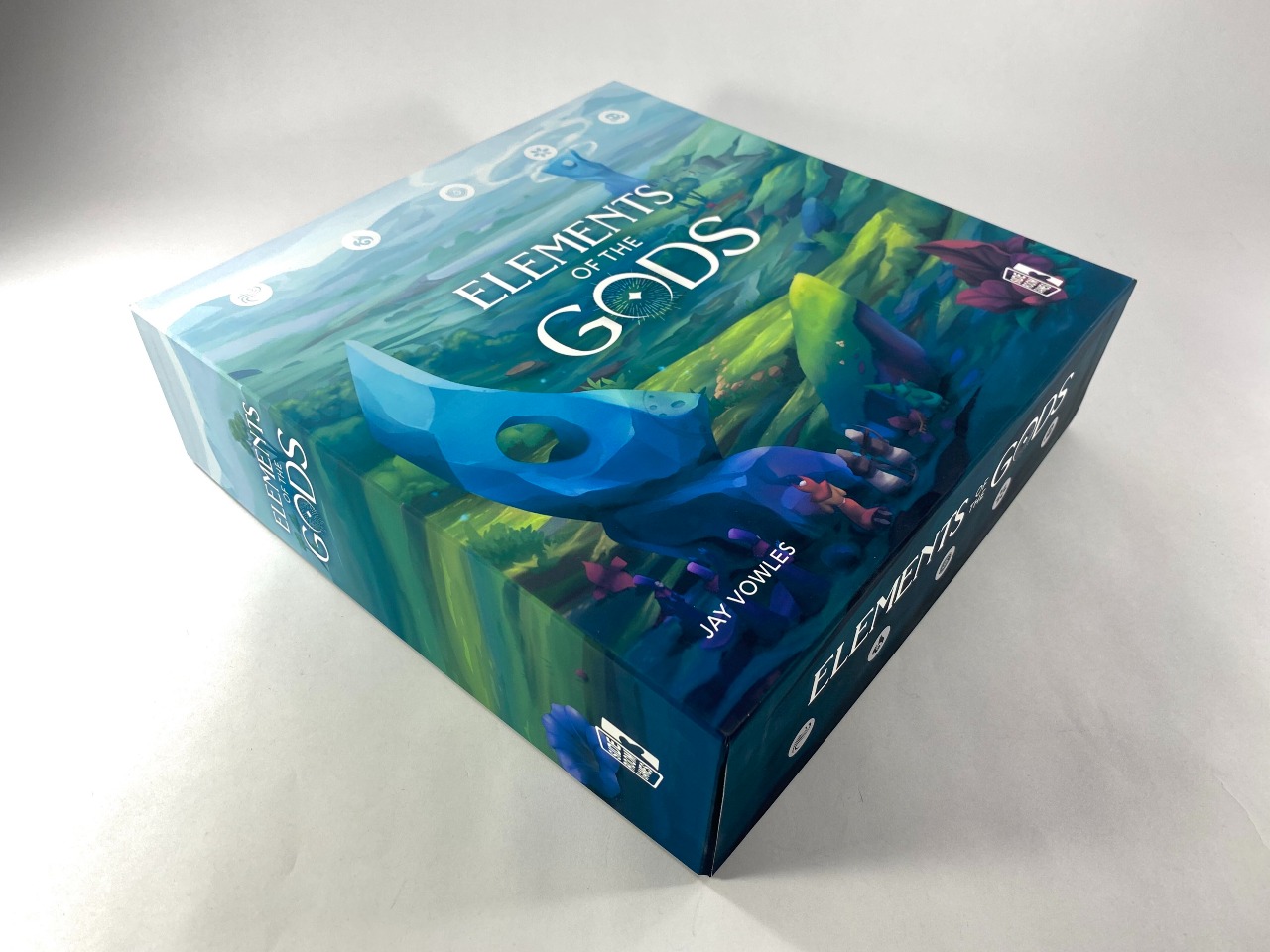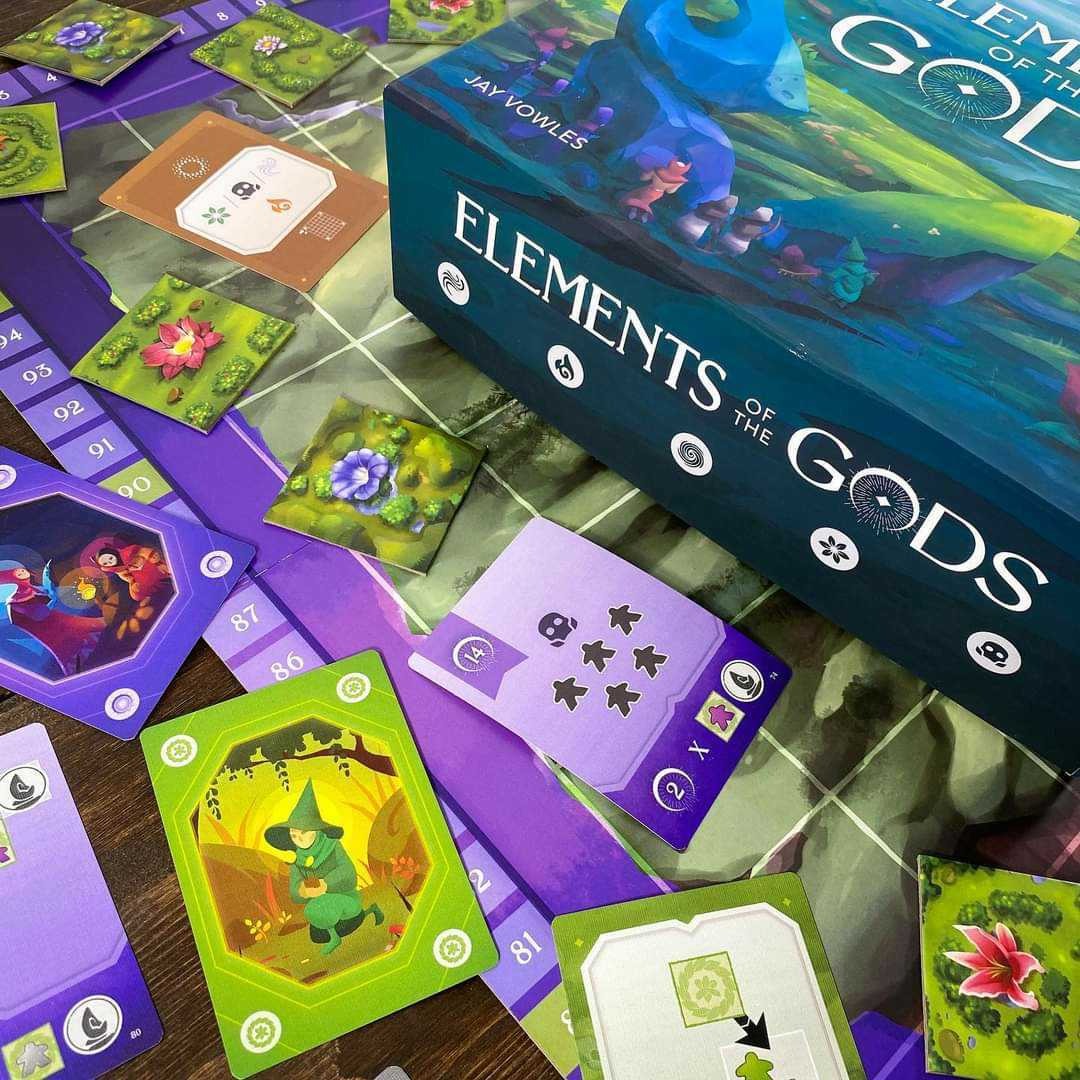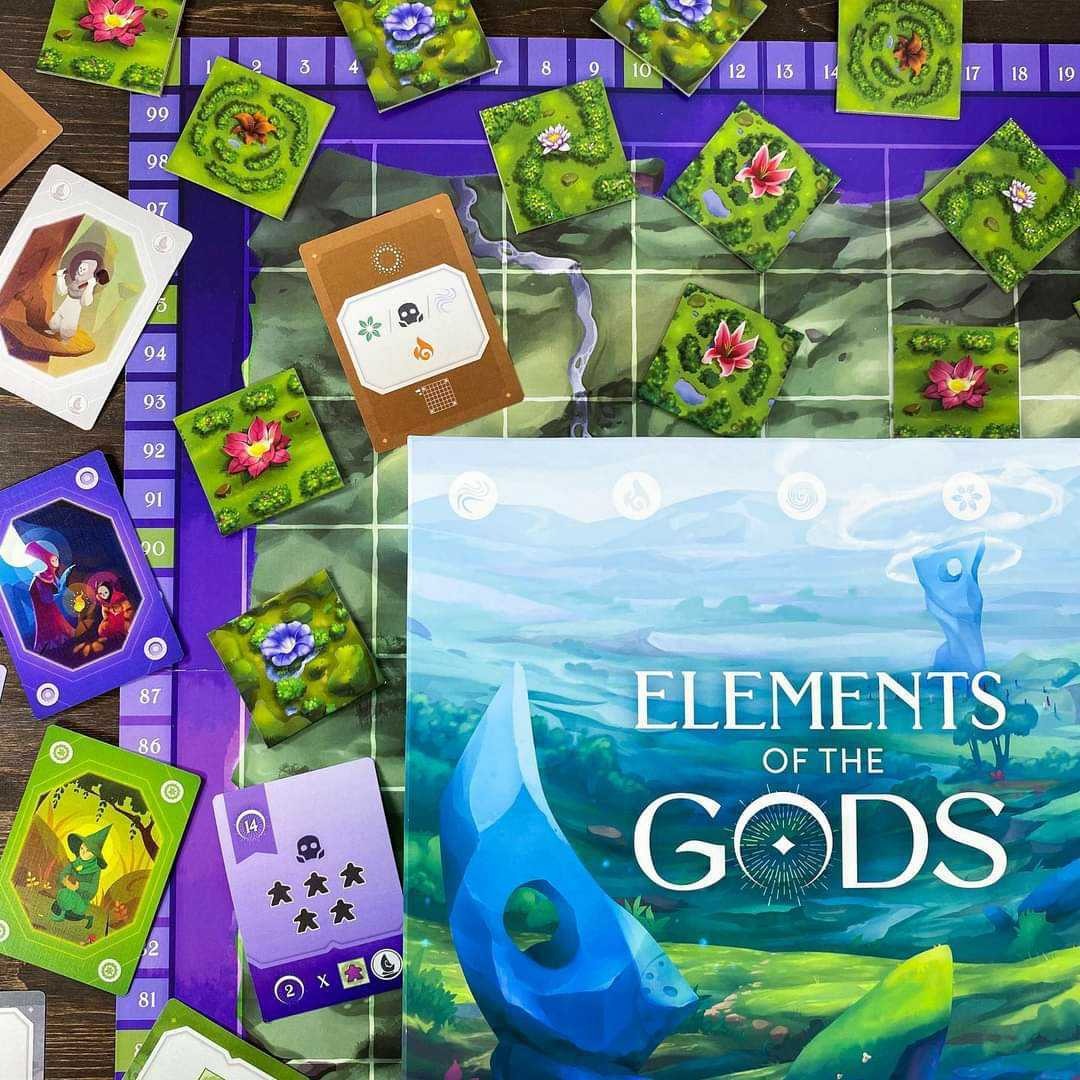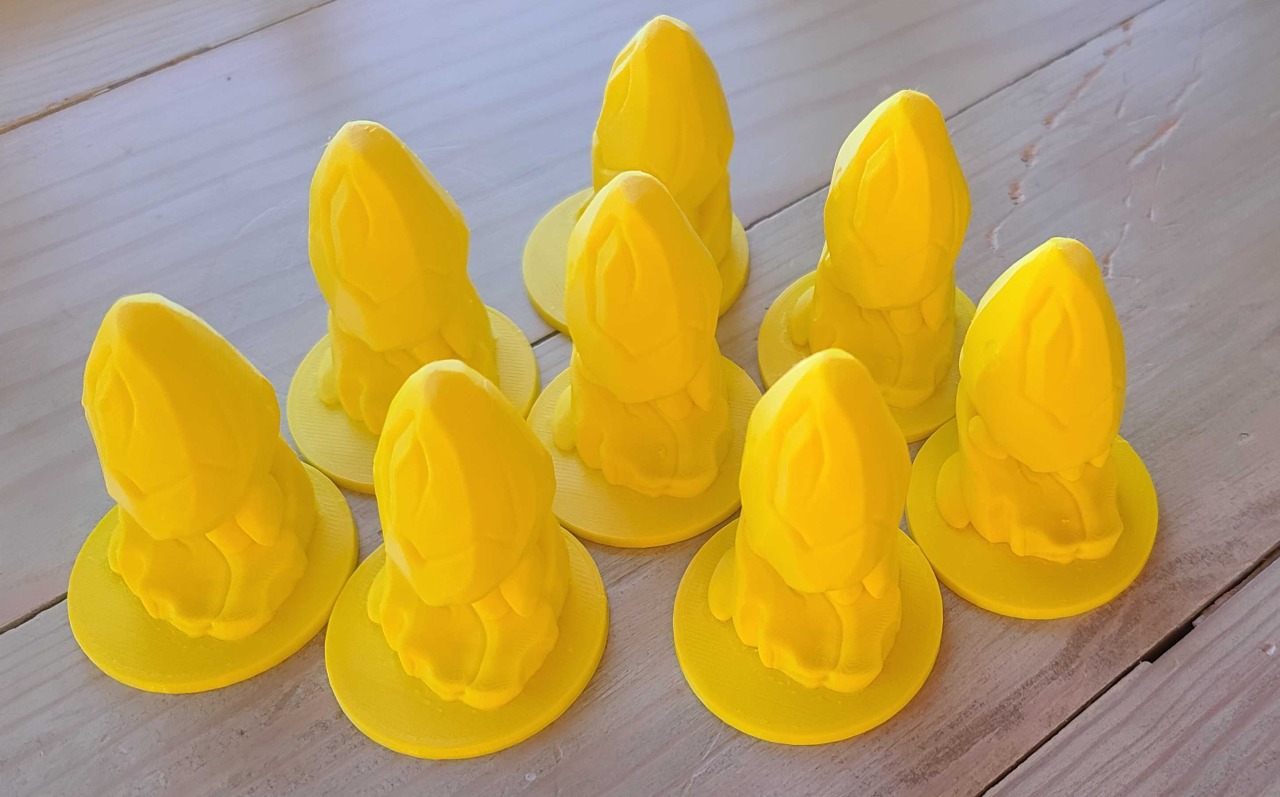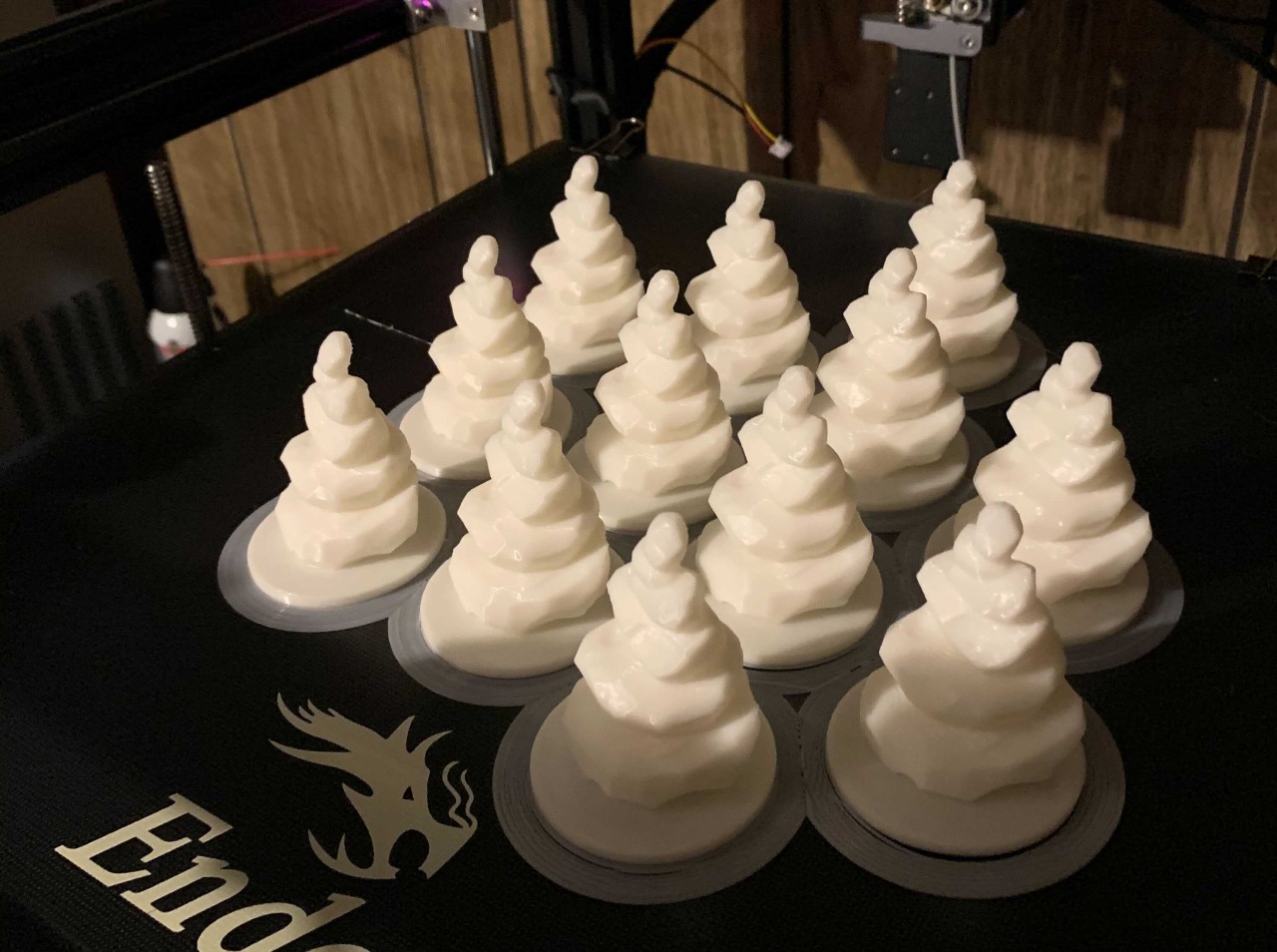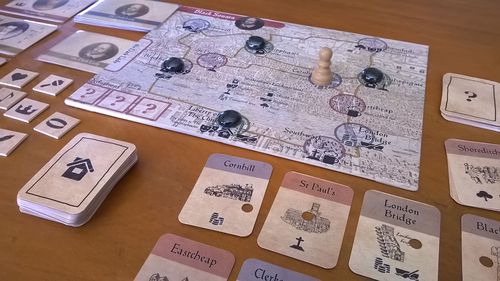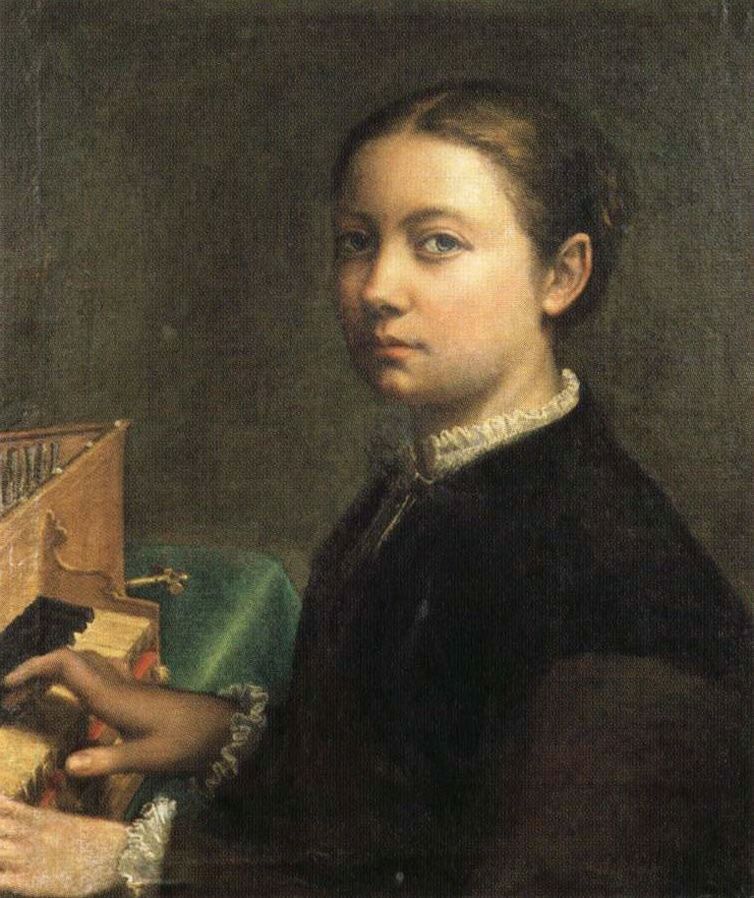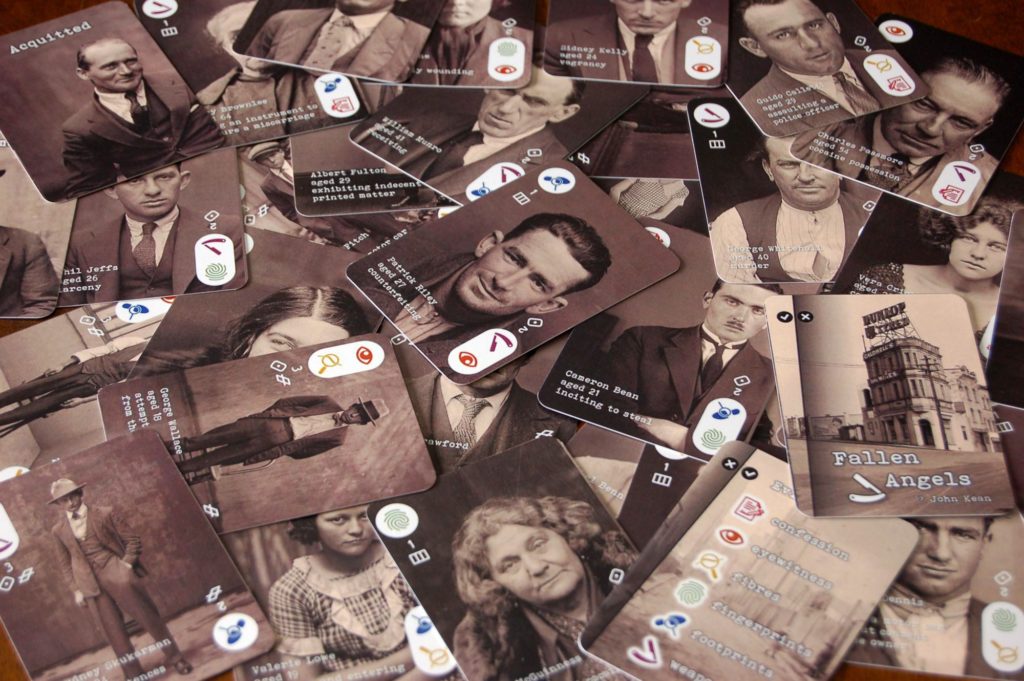Hey everyone! We’re in the last week of our Elements of the Gods Kickstarter and we have some exciting updates on a few upcoming projects. Let’s roll!
Elements of the Gods – Kickstarter Exclusive!
We’re in the final week of our Kickstarter campaign for Elements of the Gods! Remember, this one is a Kickstarter Exclusive, our first at Side Room Games. This means that the game won’t see a larger distribution for the English version and only retailers who back will be able to have it in stores in a limited quantity. Any leftover copies after fulfillment will only be available on our site at the planned MSRP of $60.
Also, here’s an update on some of our ongoing projects:
- Black Sonata & The Fair Youth: For European backers, we hit another snag… 🙁 There was an issue with the labeling process with Collext so the games have been sitting for almost 3 weeks at Heathrow. We figured out the issue and they’ve been working to get all of the packages relabeled & dispatched. Again, I am truly sorry that we’ve had these delays. There’s nothing more frustrating to a publisher than having games ready to get to backers & customers and when the process gets out of our hands things get complicated. We’re pushing Collext as hard as we can to make sure that things move quickly and this doesn’t happen again.
- Fallen Angels: As mentioned before, the last subset of games that are going to folks in Europe who ordered multiple copies + some specific countries where it made sense to send from the EU rather than China are on their way to the UK. They’re still in transit and hopefully arriving soon – that’ll wrap up fulfillment for that one but we still have copies on our site available.
- Maquis: We got our first sketches in from Ilya for the expansion missions & spare rooms – looking good so far! The plan is still for the expansion & reprint Kickstarter campaign in early 2021. As soon as we get the official launch date nailed down we’ll let folks know.
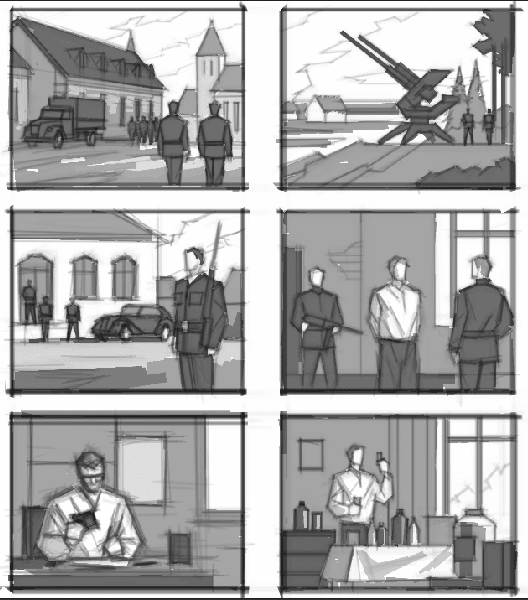
Mechanical Beast: We’ve also got some of the first art sketches/draft in for it too! Really excited for where we’re going on this one. The plan is for Mechanical Beast to launch after Maquis, likely around the April timeframe.
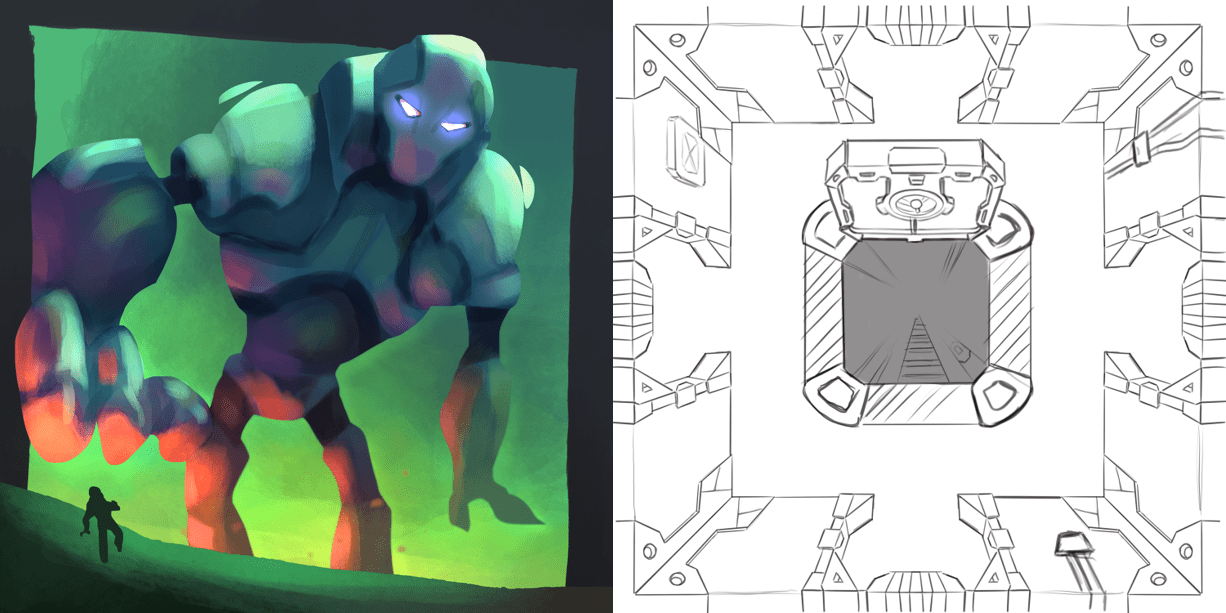
Finally, if you’re interested in designing a game or just want to check out some cool ones in development, our 2021 54 Card Game Design Contest is live on BoardGameGeek. Some of them are looking amazing so far. Definitely check them out, give them a playtest (easy print & play builds :D), and provide some feedback. And, if you have a design that’s been tinkering around in your head you should definitely get it down on paper & get it entered!
As always, if you have any questions or issues feel free to drop us a line through our social media outlets or send us an email at support@sideroomgames.com. Until next time!
Dustin
